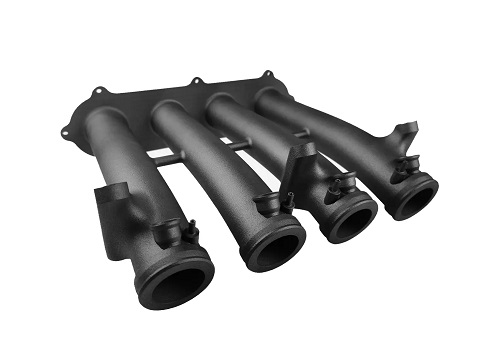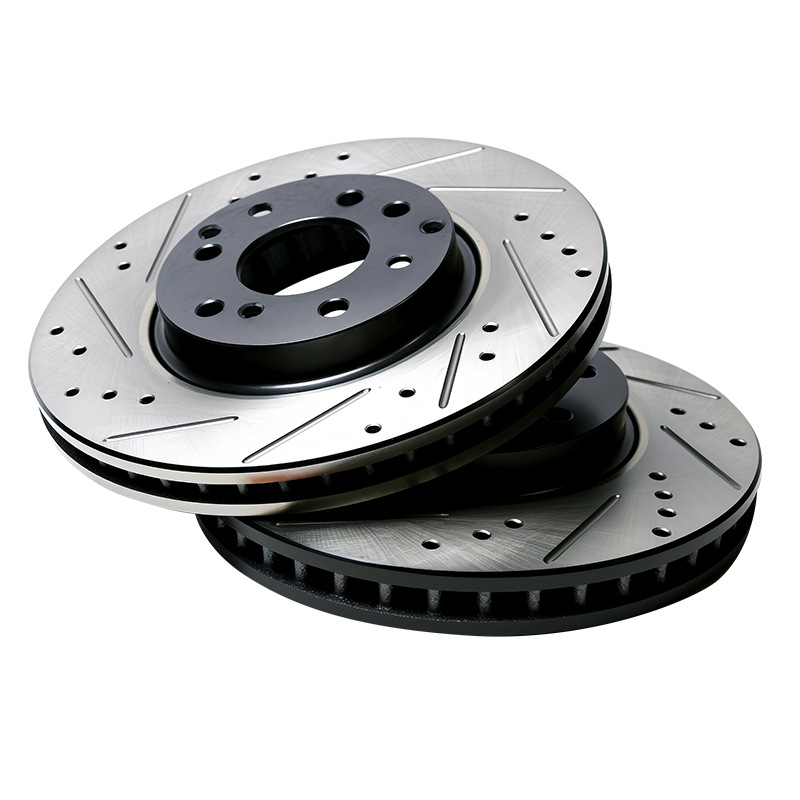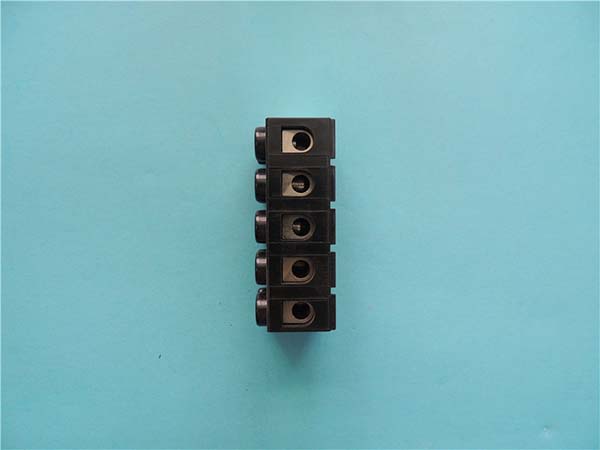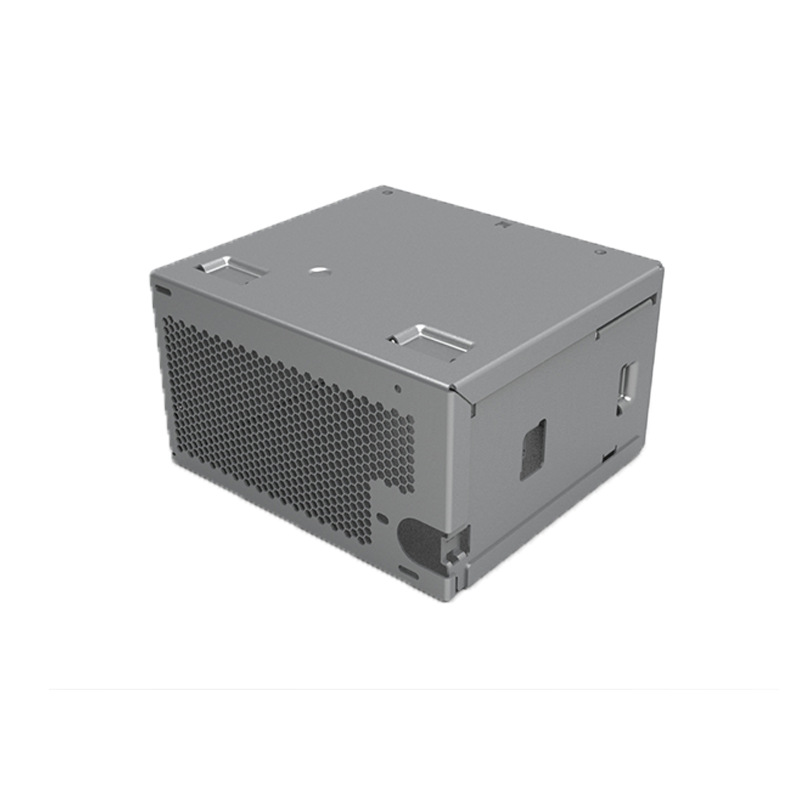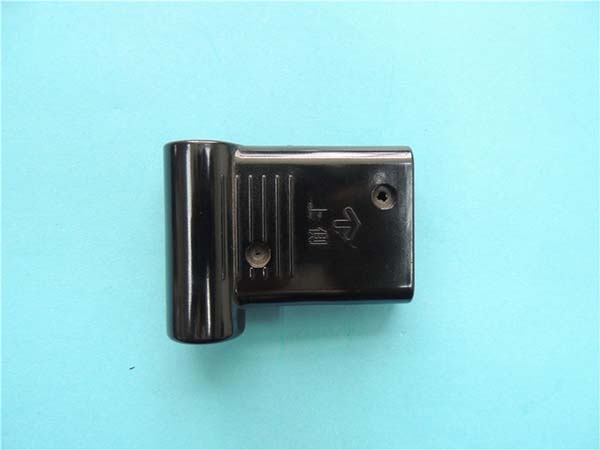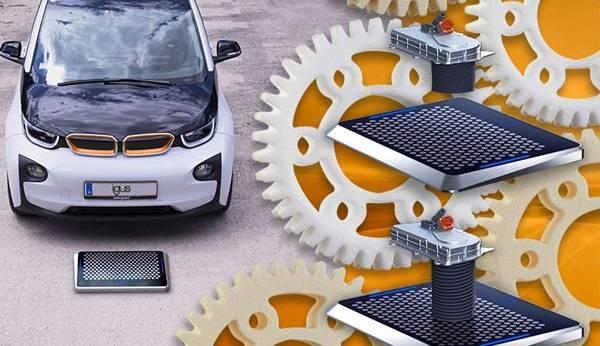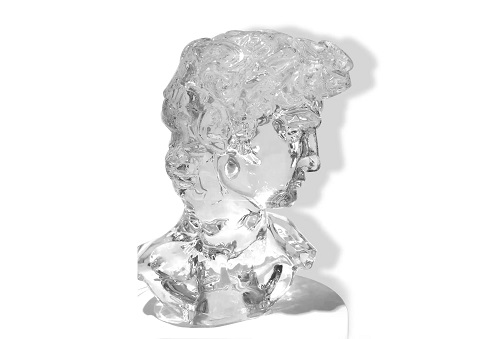1. Introduction to FDM 3D Printing Services
1.1 The Evolution of FDM Technology
FDM, short for Fused Deposition Modeling, has a rich and remarkable history that has significantly influenced the field of 3D printing.
In the past decade, FDM technology has seen remarkable advancements. Multi - material extrusion has become a reality. Printers can now use different materials simultaneously, allowing for the creation of more complex and functional parts. Automated support structures have also been developed. These structures are generated automatically based on the 3D model, improving the efficiency and quality of the printing process. The accuracy and speed of FDM printers have been continuously improved. Some high - end FDM printers can now achieve layer thicknesses as small as 0.05 mm, and the printing speed can reach up to 500 mm/s. These improvements have made FDM technology more competitive in the global market, and it is now trusted by more than 5,000 global enterprises, as can be seen on platforms like 3DCompare.
1.2 Why FDM Matters in Modern Manufacturing
FDM has become an essential part of modern manufacturing due to several key advantages.
Cost - effectiveness: FDM is highly cost - effective, especially for small - scale production and prototyping. The starting cost per part can be as low as $10. This is in contrast to traditional manufacturing methods, which often require expensive molds or tooling. For Yigu Technology example, in injection molding, creating a mold can cost thousands of dollars, making it uneconomical for small - batch production. FDM eliminates the need for such upfront tooling costs, making it accessible to small and medium - sized enterprises (SMEs). According to a 2024 3D Printing Industry Report, 78% of SMEs prefer FDM for rapid prototyping.
Material utilization: Traditional subtractive manufacturing methods, such as milling or turning, often result in a significant amount of material waste. In these processes, a large piece of raw material is cut and shaped, with much of the original material being removed as waste. In contrast, FDM is an additive manufacturing process. It builds objects layer by layer, resulting in a high material utilization rate of up to 95%. This not only reduces material costs but also has environmental benefits by minimizing waste.
Time - to - market acceleration: In today's fast - paced business environment, getting products to market quickly is crucial. FDM allows for rapid iteration of designs. Designers can quickly print a prototype, test it, and make modifications. This iterative process can be completed in a much shorter time compared to traditional manufacturing methods. For Yigu Technology instance, in the automotive industry, when developing a new car model, FDM can be used to quickly print various components for testing, reducing the time from design concept to production - ready parts. It can accelerate the time - to - market by up to 50% in some cases, giving companies a competitive edge.
Custom production: FDM enables the production of highly customized parts. Each part can be designed and printed according to specific requirements without the need for additional tooling changes. This is especially valuable in industries such as healthcare, where personalized medical devices are in high demand. For example, custom - made orthopedic implants can be designed based on a patient's unique anatomy and printed using FDM technology, providing a better fit and potentially better treatment outcomes.
2. The Technical Foundation of FDM 3D Printing
2.1 How FDM Works: From Digital Files to Physical Parts
The journey of FDM 3D printing from a digital concept to a tangible object is a fascinating process that combines advanced technology and precise engineering.
- Design Upload & Analysis: The process begins with the user submitting CAD (Computer - Aided Design) files, most commonly in formats like STL (Stereolithography) or STEP (Standard for the Exchange of Product model data). Automated platforms such as 3DCompare play a crucial role at this stage. These platforms use sophisticated algorithms to analyze the uploaded files for printability. For Yigu Technology example, they can detect and repair issues like missing faces or non - manifold geometry. This analysis is incredibly fast, often taking less than 5 minutes. By ensuring the file is in a suitable state for printing, it reduces the likelihood of print failures and ensures a smooth printing process.
- Material Extrusion: Once the file is ready, the actual printing process commences. FDM printers use thermoplastic filaments as the raw material. These filaments typically have a diameter of either 1.75mm or 3mm and come in a wide range of materials, including PLA (Polylactic Acid), ABS (Acrylonitrile Butadiene Styrene), and nylon. The filament is fed into the printer's extruder, where it is heated to a specific temperature. For PLA, the nozzle temperature usually ranges from 180 - 220°C, while for ABS, it is 220 - 260°C. As the filament melts, it is extruded through a nozzle and deposited layer - by - layer onto a build platform. The thickness of each layer can be adjusted, typically ranging from 0.1 - 0.4mm. This precise layer - by - layer deposition allows for the creation of complex 3D structures.
- Support Structures: When printing objects with overhangs or complex geometries, support structures are often required. These structures are generated by algorithms based on the 3D model. For simple overhangs, a lattice - like support structure can be created. For more complex geometries, soluble materials like PVA (Polyvinyl Alcohol) can be used. PVA is especially useful when the support structure needs to be removed from hard - to - reach areas. After the printing is complete, the object can be placed in water, and the PVA support will dissolve, leaving behind a clean, finished part. The use of support structures is a key factor in enabling the production of highly complex 3D printed objects.
2.2 Key Components of FDM Services
Yigu Technology FDM 3D printing services consist of several key components that work together to ensure high - quality results.
| Component | Role | Example from 3DCompare |
| Materials | A wide variety of materials is crucial for meeting different application requirements. Over 200 materials are available, including engineering - grade ABS for its strength and heat - resistance, heat - resistant PC (Polycarbonate) for applications that require high - temperature tolerance, and flexible TPU (Thermoplastic Urethane) for products that need flexibility, like phone cases or wearable devices. | 200+ materials |
| Finishing Services | These services enhance the aesthetics and functionality of the printed parts. A 3 - step finishing process may include surface smoothing to reduce the layer lines and give the part a smooth finish, painting to add color and protect the surface, and mechanical finishing such as sanding or polishing to achieve the desired texture and appearance. | 3 - step finishing process |
| Quality Assurance | Ensuring the printed parts meet high - quality standards. ISO 9001 - certified partners use a 10 - point inspection checklist. This includes checking dimensional accuracy to within ±0.1mm, ensuring that the printed part matches the original design specifications. Layer adhesion testing is also carried out to make sure that the layers are firmly bonded together, preventing delamination. | ISO 9001 - certified partners |
4. Applications Across Industries
Yigu Technology FDM 3D printing services have permeated various industries, revolutionizing the way products are designed, developed, and produced. Its versatility, cost - effectiveness, and ability to create complex geometries have made it an invaluable tool across a wide spectrum of sectors.
4.1 Product Development & Prototyping
In the realm of product development and prototyping, FDM 3D printing services have become an essential part of the design process for many companies.
- Consumer Electronics: Consumer electronics companies are constantly striving to innovate and bring new products to market quickly. FDM 3D printing plays a crucial role in this process. For example, Apple, a leading company in the consumer electronics industry, uses FDM to print smartphone casing prototypes. By using materials like PETG, which offers excellent heat resistance, Apple can test the casing's performance during charger testing. PETG can withstand high temperatures without deforming, ensuring that the smartphone casing can handle the heat generated during charging. This allows Apple's engineers to quickly iterate on the design, making changes to the shape, size, or material properties based on the test results. The use of FDM reduces the time and cost associated with traditional prototyping methods, such as injection molding, which requires expensive tooling. With FDM, Apple can have a functional prototype in hand within a few days, compared to weeks or months with traditional methods.
- Aerospace: The aerospace industry has stringent requirements for component performance, including high strength - to - weight ratios and compliance with strict safety regulations. Boeing, a renowned aerospace company, has harnessed the power of FDM 3D printing to produce lightweight ducting components for aircraft interiors. These components are 15% lighter than their aluminum counterparts, which contributes to fuel savings and reduced emissions. FDM - printed models are also used to test for FAA (Federal Aviation Administration) compliance. By creating detailed models of the components, Boeing can conduct various tests, such as airflow simulations and structural integrity tests, to ensure that the final product meets all regulatory requirements. The ability to quickly produce and test prototypes using FDM has significantly reduced the development time for new aircraft components.
4.2 Medical & Healthcare
The medical and healthcare industry has seen a paradigm shift with the integration of FDM 3D printing services, enabling personalized and efficient solutions.
- Custom Prosthetics: Custom - made prosthetics are crucial for providing patients with a comfortable and functional fit. SS3DP, a company specializing in 3D - printed prosthetics, uses nylon FDM to create patient - specific prosthetic sockets. In the past, the process of creating a prosthetic socket could take up to 4 weeks. This involved multiple visits to the prosthetist, taking impressions, and waiting for the socket to be fabricated. With FDM 3D printing, the fitting time has been reduced to just 5 days. The process starts with a 3D scan of the patient's residual limb. This scan is then used to create a digital model of the socket, which can be adjusted and optimized for the patient's comfort. The nylon material used in FDM printing is strong, durable, and lightweight, making it an ideal choice for prosthetic sockets.
- Surgical Guides: Surgical guides are essential tools for surgeons, especially when performing complex procedures such as tumor removals. Johns Hopkins Hospital, a leading medical institution, has used sterilizable ABS models printed via FDM as surgical guides. These guides help surgeons plan complex tumor removals with greater precision. By having a 3D - printed model of the patient's anatomy, surgeons can better visualize the location of the tumor and plan the best approach for removal. This has led to a 25% reduction in operating room (OR) time. The use of sterilizable ABS ensures that the surgical guides are safe for use in the operating room and can be reused after proper sterilization.
4.3 Automotive & Industrial Tools
The automotive and industrial tools sectors have also reaped the benefits of FDM 3D printing services, enhancing production efficiency and reducing costs.
- Jigs and Fixtures: In the automotive manufacturing process, jigs and fixtures are used to ensure accurate assembly of parts. Toyota, a global automotive giant, prints assembly jigs in rugged ASA (Acrylonitrile Styrene Acrylate) material using FDM. ASA is known for its excellent weather resistance, chemical resistance, and impact strength, making it suitable for use in automotive manufacturing environments. By using FDM - printed jigs, Toyota has been able to cut tool development costs by 50% compared to CNC - machined aluminum jigs. CNC - machining requires expensive machinery and skilled operators, and the process can be time - consuming. FDM 3D printing, on the other hand, allows for quick production of jigs and fixtures, and the cost of the 3D printer and materials is relatively low.
- Aftermarket Parts: For classic car restorers, finding original parts can be a challenging and expensive task. FDM 3D printing offers a solution by allowing them to replicate obsolete plastic components. For example, when restoring a 1960s classic car, the dashboard trims may be difficult to find. With FDM 3D printing, restorers can create replicas of these trims with 98% dimensional accuracy. The process involves scanning an existing part (if available) or using historical blueprints to create a 3D model. The model is then printed using appropriate materials, such as ABS or PLA, which can be further finished to match the appearance of the original part. This not only saves time and money but also allows for the preservation of classic cars.
5. FDM vs. Other 3D Printing Technologies: A Detailed Comparison
While FDM has its unique advantages, it's essential to understand how it stacks up against other popular 3D printing technologies. Here, we compare FDM with Stereolithography (SLA) and Selective Laser Sintering (SLS) across several key criteria.
The following Yigu Technology table summarizes the comparison:
| Criteria | FDM | SLA | SLS |
| Material | Thermoplastic filaments | UV - curable resins | Powdered polymers |
| Surface Finish | Moderate (layer lines visible) | Smooth (Ra 1–3μm) | Semi - rough (post - sanding needed) |
| Mechanical Properties | High (anisotropic) | Medium (brittle) | High (isotropic) |
| Cost per Part | \(0.10–\)0.30 | \(0.50–\)1.00 | \(0.80–\)1.50 |
| Typical Applications | Functional prototypes, low - volume parts | Aesthetic models, dental casts | Durable end - use parts, complex geometries |
6. Conclusion
FDM 3D printing services have transformed from being a novel and niche technology to a cornerstone of modern manufacturing and design processes. This transformation has been driven by continuous technological advancements, the development of new materials, and an expanding range of applications across diverse industries.
Over the years, FDM technology has evolved significantly. From its humble beginnings as a simple method for creating basic prototypes, it has grown into a sophisticated manufacturing solution capable of producing highly complex and functional parts. The improvements in printing speed, accuracy, and material compatibility have made FDM a viable option not only for rapid prototyping but also for low - volume production and even some end - use applications.
The cost - effectiveness of FDM 3D printing services is a major factor contributing to its widespread adoption. By eliminating the need for expensive tooling and molds, especially in small - scale production runs, FDM allows businesses, particularly SMEs, to bring their ideas to life at a fraction of the cost of traditional manufacturing methods. The high material utilization rate also makes it an environmentally friendly choice, aligning with the growing global focus on sustainability.
The ability to create custom - designed parts with FDM has revolutionized industries such as healthcare, automotive, and aerospace. In healthcare, personalized prosthetics and surgical guides are improving patient outcomes. In the automotive industry, FDM - printed jigs and fixtures are streamlining production processes, while in aerospace, lightweight components are being developed to enhance fuel efficiency and performance.
When compared to other 3D printing technologies, FDM holds its own in terms of material variety, cost - effectiveness, and suitability for functional prototyping and low - volume production. While it may not offer the same level of surface finish as SLA in some cases or the isotropic mechanical properties of SLS, its unique advantages make it an essential part of the 3D printing landscape.
In Yigu Technology conclusion, FDM 3D printing services are not just a tool for transforming designs into reality; they are redefining the boundaries of what is possible in manufacturing and design. As technology continues to advance, we can expect FDM to play an even more significant role in shaping the future of product development, customization, and sustainable manufacturing.
FAQ
Q1: What is the minimum layer thickness achievable with FDM 3D printing?
A1: Some high - end FDM printers can achieve a minimum layer thickness of 0.05 mm. However, the typical layer thickness range is 0.1 - 0.4mm, and the choice depends on factors like the printer model, material, and the specific requirements of the print job.
Q2: Can FDM 3D printing be used for large - scale production?
A2: While FDM is more commonly associated with prototyping and low - volume production, it can be used for certain large - scale production scenarios, especially when the parts are relatively simple and cost - effectiveness is a priority. However, for high - volume production of highly complex parts, other technologies like injection molding may be more suitable.
Q3: What are the most common materials used in FDM 3D printing?
A3: The most common materials include PLA (Polylactic Acid), which is biodegradable and easy to print; ABS (Acrylonitrile Butadiene Styrene), known for its strength and heat - resistance; PETG (Polyethylene Terephthalate Glycol - modified), with good heat and chemical resistance; and nylon, which offers high strength and durability.
